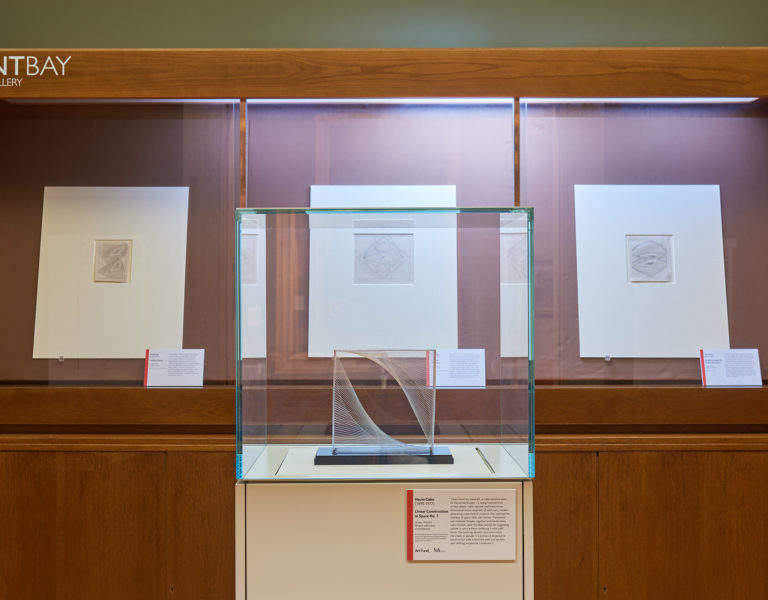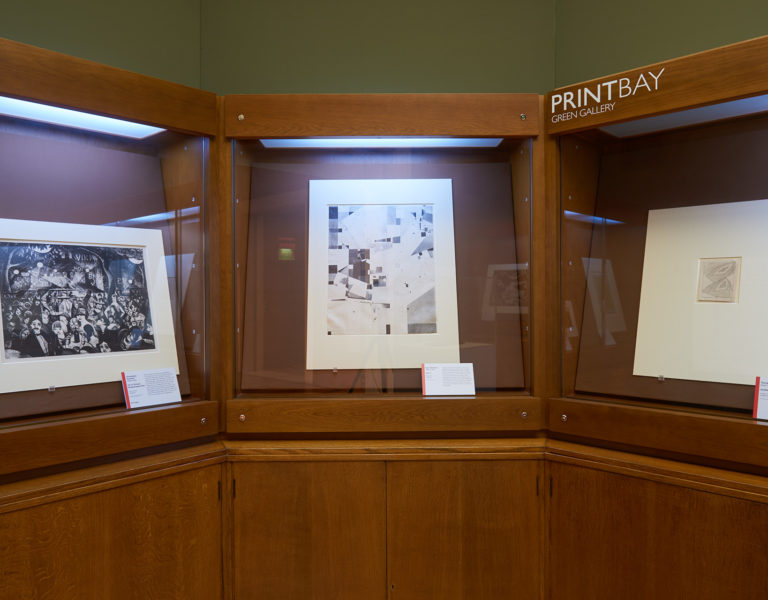Redefining Perception in the 20th Century
International artists of the 20th century constructed new perceptions of the world during a time of intense and turbulent change – from huge technological and scientific advancements, to political revolutions and two world wars.
These seismic shifts, coinciding with the rise in popularity of photography, called into question the purpose of art, while the invention of the X-ray and renewed interest in the concept of a fourth dimension opened up new possibilities for portraying the world.
Artists began to move beyond, or reject outright, traditional illusionistic representation as no longer sufficient for expressing the modern experience, sparking experiments in form, space and perspective. This display features drawings prints and sculpture from the Barber collection by pioneering artists of the period as diverse as Christopher Nevinson, Kurt Schwitters, Max Beckman, Max Ernst, Naum Gabo and Tess Jaray.
How has the global pandemic affected your way of thinking?
We have all witnessed and experienced the effects of rapid social, cultural, and economic change during the Covid-19 pandemic. For many, it has been a period of significant mental and physical adjustment. Through this collective experience, we have also gained a new perceptive tool – the pandemic lens. By looking through this lens, we may gain a better understanding of artists’ responses to similarly transformative periods. Beyond Representation invites you to reflect upon the ways in which international artists constructed new perceptions of the world in the twentieth century – during times of intense, and often turbulent, change.
From huge technological and scientific advancements, to political revolutions and two world wars, the twentieth century saw unprecedented changes. The increased popularity of photography called into question the purpose of art, while the invention of the X-ray and renewed interest in the concept of a fourth dimension opened up new possibilities. Many artists began to move beyond, or reject outright, traditional illusionistic representation, feeling that it was no longer sufficient for expressing the modern experience. This sparked a plethora of new experiments in form, space and perspective.
Artists’ conceptions of physical space, in particular, underwent a distinct shift in the twentieth century, and this was often motivated by a desire to encourage more meaningful engagement with art. Over the course of the Covid pandemic, our own physicality in space is something with which we have become particularly familiar (‘two metres apart please’). With this in mind, works that take space as a subject in itself have perhaps become charged with a new significance, encouraging us to think about the role that our bodies and our movements play in our experience of art.
Display curated by Lucy Gray, Arts Society Collections Intern.
This display is dedicated to the memory of Dr Jutta Vinzent, Associate Professor (Senior Lecturer) in Art History, Curating and Visual Studies at the University of Birmingham, who sadly passed away in November 2021.
Jutta was a specialist in modern and contemporary art with a specific focus on issues of migration and mobility. Her most recent book, ‘From Space in Modern Art to a Spatial Art History’ (2019), traces artists’ theories of constructive space in the first half of the twentieth century.
Jutta was my tutor and dissertation supervisor during my master’s degree last year. I will always remember her frankness in feedback, forthright enthusiasm, and genuine desire and commitment to seeing her students improve and succeed. Jutta, I wish I had the pleasure of knowing you for longer, and I hope you would have approved of and enjoyed this display!
Lucy Gray






